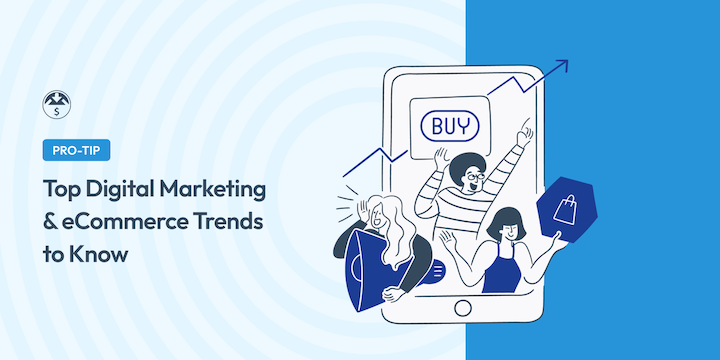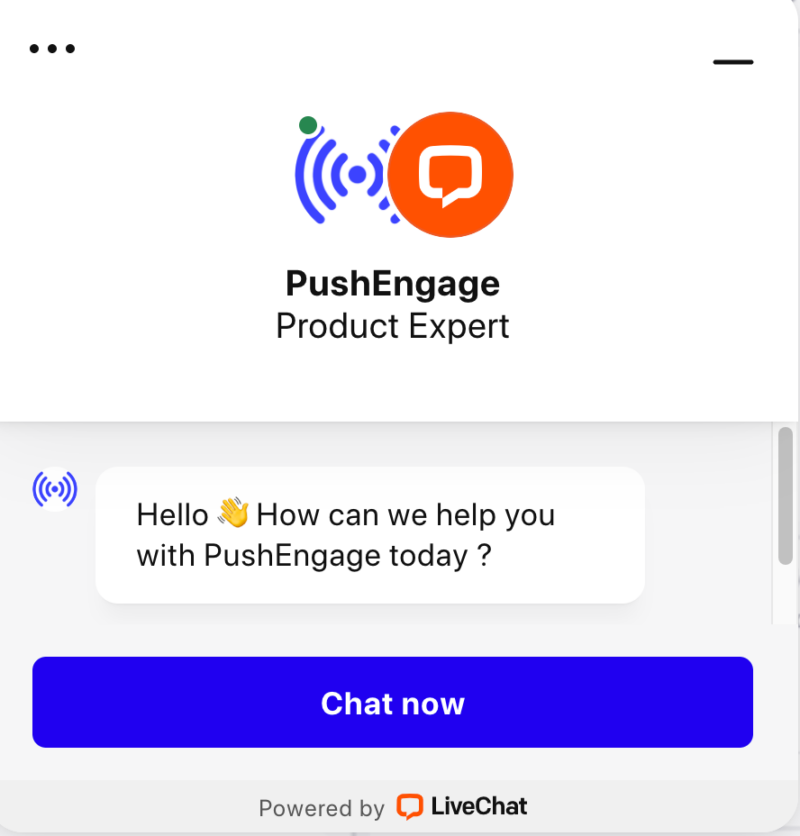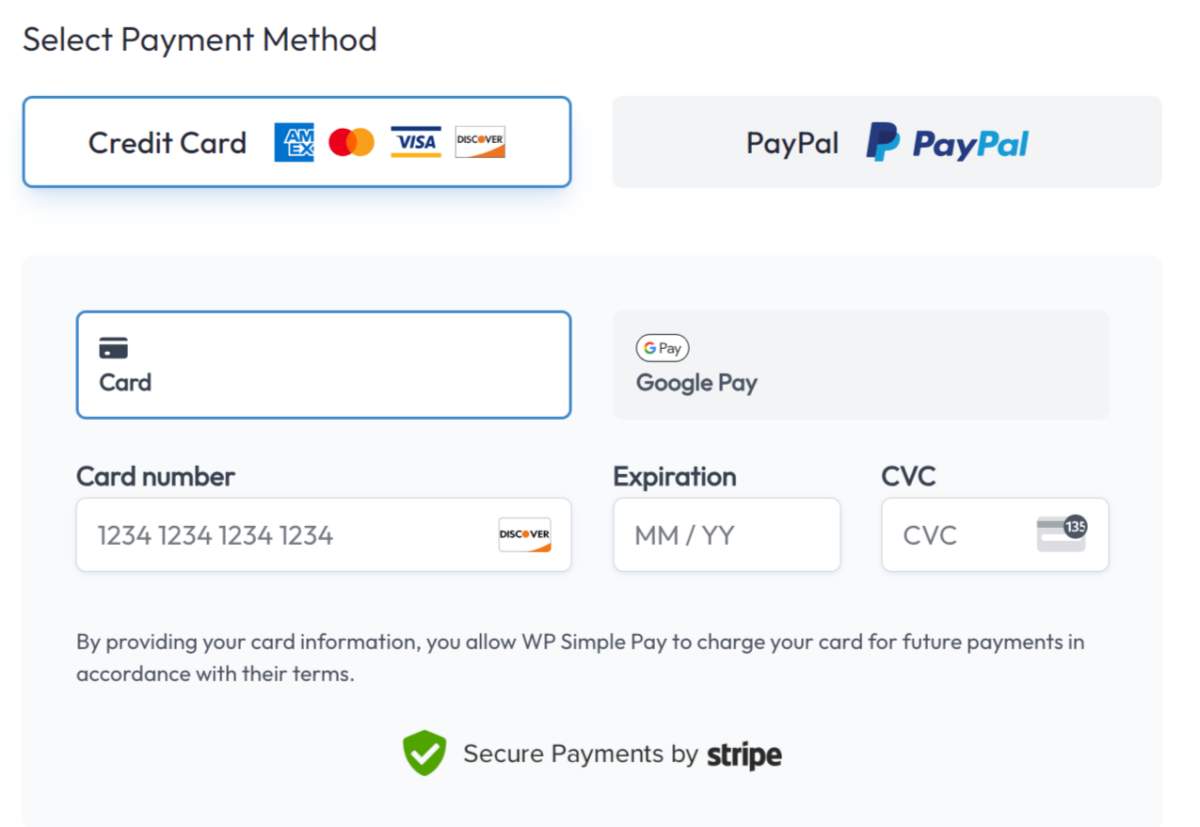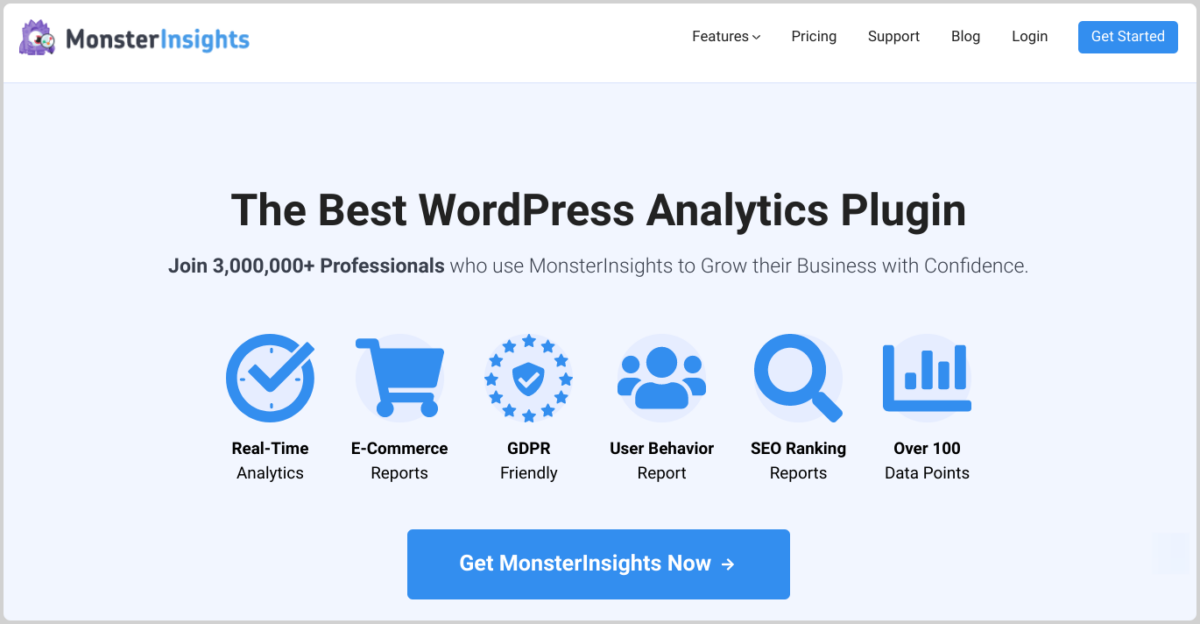
Are you preparing your online business for upcoming e-commerce trends?
Running an online store requires constant adaptation. Strategies that drove sales just a year ago often lose their effectiveness as buyer habits shift. To keep your business growing, you need to prepare for the specific e-commerce trends in 2026.
We aren’t talking about chasing every fleeting fad. We’re looking at the concrete shifts in how people buy—from the practical application of AI to the demand for hyper-personalized experiences.
By focusing on these changes now, you can enhance your marketing, maintain customer satisfaction, and secure your revenue for the year ahead.
🔎 In this article, I’ll cover:
- Why Adapt to Digital E-Commerce Trends?
- Top E-Commerce Trends for 2026
- 1. Hyper-Personalized Shopping Experiences
- 2. AI & Agentic Commerce
- 3. Voice & Visual Search Optimization
- 4. Augmented Reality (AR) & Virtual Reality (VR)
- 5. Social Commerce & Zero-Click Purchasing
- 6. Quick & Convenient Checkouts
- 7. User-Generated Content (UGC)
- 8. Authentic Influencer Partnerships
- 9. Subscription-Based Models & Micro-Memberships
- 10. AI-Powered Cross-Selling
- 11. Short-Form Videos
- 12. First-Party Data & Instant Analytics
- 13. Sustainable E-Commerce Practices
- 14. Loyalty Programs & Gamification
- FAQs on E-Commerce Trends in 2026
Why Adapt to Digital E-Commerce Trends?
Staying current isn’t just a “good idea”—it is a survival mechanism.
Let’s look at some of the biggest reasons to adopt e-commerce trends for 2026.
- Gain a competitive advantage. By adopting new trends before your competitors, you’ll offer a fresh and differentiated customer experience that sets you apart, attracts attention, and fosters brand loyalty.
- Enhance the customer experience. Customers today are tech-savvy and expect seamless, personalized experiences. In fact, research continues to show that the majority of shoppers expect online retailers and businesses to adapt to their changing needs and preferences immediately.
- Increase reach and visibility. New trends often involve emerging platforms and technologies. By staying at the forefront of e-commerce, you’ll gain visibility, attract attention, and boost brand awareness.
Remember that trends aren’t simply fads. Rather, they represent advancements and shifts in consumer behavior that shape the future of e-commerce. Therefore, staying informed and proactively adopting relevant trends can unlock new opportunities, build a competitive edge, and thrive in the world of e-commerce.
Top E-Commerce Trends for 2026
Ready to get into it?
In the following sections, I’ll discuss some of the biggest e-commerce industry trends for 2026 that you can expect to see and prepare for. I’ll also explain the importance of these trends and provide some ways you can apply them to your own business.
1. Hyper-Personalized Shopping Experiences
Personalization—the practice of tailoring marketing messages and experiences to individual customers—has evolved. In 2026, we are moving beyond basic “Hello [Name]” emails into hyper-personalization.
In 2026, expect to see AI generating dynamic content, pricing bundles, and e-commerce site experiences in real-time. This requires businesses to leverage first-party data effectively.
For instance, personalized product recommendations can help shoppers find the products they are most interested in based on their shopping behavior. This is something we recently added to EDD Pro: Smart Cart Recommendations.

Aim to ensure every interaction along the customer journey feels uniquely crafted. This applies to both existing and potential customers and omnichannel experiences across all digital touchpoints.
2. AI & Agentic Commerce
AI is no longer just a buzzword; it is the infrastructure of modern e-commerce. While we previously focused on AI writing emails or simple automation, the landscape for 2026 has shifted toward Agentic Commerce.
This evolution refers to AI agents that don’t just generate text or analyze data. They perform actions on behalf of the user. For store owners, this means utilizing AI tools that can:
- Automatically adjust pricing based on real-time demand.
- Generate product images on the fly for A/B testing.
- Handle complex customer support tickets without human intervention.
Of course, the foundational benefits of AI remain.
You can still leverage it to automate marketing tasks and personalize customer experiences. AI algorithms continue to analyze vast amounts of data—including customer demographics, purchase history, and website behavior—to identify patterns.
Automation and AI-powered chatbots are increasingly prominent top e-commerce trends for 2026 and beyond. They can provide 24/7 customer service, understand customer inquiries, and provide relevant responses.

These tools have evolved to provide 24/7 customer service that understands complex inquiries and offers responses often indistinguishable from human support.
The shift to Agentic Commerce offers powerful potential for selling digital products. Imagine an AI agent that detects when a customer’s software license is about to expire, drafts a personalized renewal email based on their specific usage data, and offers a dynamic discount—all without you lifting a finger.
3. Voice & Visual Search Optimization
The way customers find products is shifting fundamentally. With over 50% of searches now being “zero-click”—meaning the user gets their answer directly on the search results page without visiting a site—optimizing for Voice and Visual search is critical for 2026.
Visual Search Image search is no longer just about finding a similar outfit from a magazine. Users are increasingly snapping photos with tools like Google Lens to find products immediately. This means your product images need to be high-quality and properly tagged, as users bypass text descriptions entirely to search with their cameras.
Voice Search and Conversational SEO Voice search continues to grow as users rely on smart speakers and mobile assistants. However, the strategy for capturing this traffic has changed. Optimization now requires a focus on conversational, long-tail keywords rather than short, static phrases.
For example, a user typing on a desktop might search for “SEO Plugin.” However, a user speaking to a voice assistant is more likely to ask: “What is the best SEO plugin for digital downloads?”
How to Adapt
- Target Questions: Create content that answers specific questions your customers are asking.
- Use Natural Language: Write in a tone that matches how people speak.
- Structured Data: Continue to use structured data markup (Schema). This helps search engines understand your content and increases the likelihood of your products appearing in rich snippets and voice search results.
- Consider creating voice-activated product demos and customer support chatbots.
4. Augmented Reality (AR) & Virtual Reality (VR)
Augmented reality (AR) and virtual reality (VR) have matured significantly. In 2026, they are revolutionizing how customers “try before they buy,” even for digital goods.
AR is a technology that superimposes a computer-generated image on a user’s view of the real world. VR technology immerses a user in a simulated environment, typically through a headset or other device.

For digital sellers, AR can be used to visualize 3D print files in a real space, or VR can allow users to “walk through” a digital architectural plan or game environment before purchasing the file.
5. Social Commerce & Zero-Click Purchasing
Social selling has transitioned from discovery to direct purchasing. Platforms like TikTok Shop and Instagram Shopping are now primary points of sale.
Social commerce refers to the seamless integration of shopping experiences into social media platforms. Customers can browse products, view product reviews, and check out directly within their social media feeds without leaving the platform.
An Instagram user might discover a new product through a shoppable post, read reviews in the comments section, and purchase the product without leaving the Instagram app.
Perhaps you’re not ready to switch from primary e-commerce platforms like your website to social channels. That’s okay. After all, a research study found that 53% of shoppers are finding it increasingly difficult to trust products sold through social media.
However, you can (and should) use social media to grow brand awareness, engage with your customers, and build relationships.
A WordPress plugin like Smash Balloon makes it easy to aggregate and integrate your social feeds on your e-commerce site:

Additionally, direct messages (DMs) on platforms like Instagram, Facebook Messenger, and X/Twitter are increasingly being used for customer service interactions. This provides a more personalized and convenient way for customers to resolve issues or seek assistance.
6. Quick & Convenient Checkouts
Providing a smooth, hassle-free shopping experience is more important than ever. Primarily, this means ensuring your online store delivers a seamless user experience on desktops, smartphones, and other mobile devices.
It should be easy to use and navigate, and include search functionality. It’s also essential to optimize the checkout process to be as quick and straightforward as possible.
One way to do this is to use a reliable payment gateway like Stripe.
Stripe lets users save their payment details for future purchases (using Link). Additionally, it supports multiple payment methods so shoppers can choose the payment method that is most convenient for them.

This includes debit and credit cards, digital wallet payments (Apple Pay, Google Pay), and pay-later options like Klarna.
In addition to offering multiple payment options, create a clean and concise checkout page with as few steps as possible. Only ask shoppers for necessary information. Minimizing friction can help reduce shopping cart abandonment and increase conversion rates.
7. User-Generated Content (UGC)
User-Generated Content (UGC) is one of the most helpful digital marketing trends. You can use it to incorporate content marketing, SEO, and storytelling into your marketing strategies.
UGC is content created by consumers, such as product reviews, social media posts, or blog articles. It provides real-world perspectives and opinions from actual people, fostering trust and credibility. Brands can curate and showcase UGC to demonstrate product usage, address customer concerns, and build a sense of community.
8. Authentic Influencer Partnerships
As far as e-commerce trends surrounding influencers, 2026 is moving away from “pay-to-post” and toward long-term brand ambassadorships.
Brands will continue to seek micro-influencers and nano-influencers with niche audiences. These individuals can create reviews, tutorials, or promotional posts to help you reach your target audience.
But influencer marketing campaigns must prioritize authenticity and engagement over reach.
Younger generations like Gen Z and Gen Alpha care deeply about social responsibility. This translates to a demand for transparency and authenticity. Gone are the days of polished ads and hidden partnerships. Instead, audiences crave real experiences, honest reviews, and connections with relatable individuals.
9. Subscription-Based Models & Micro-Memberships
Subscription-based models provide customers with recurring access to products or services for a regular fee.
In 2026, we’re seeing a rise in “micro-memberships”—low-cost, high-value recurring payments for exclusive content or community access.
Customers subscribe to a service and receive ongoing deliveries, access to content, or usage privileges. Their convenience, recurring revenue potential, and ability to foster customer loyalty and retention make them a compelling choice for a wide range of businesses.

If you use WordPress, there are plenty of membership plugins to choose from.
Easy Digital Downloads offers multiple extensions that can help with selling memberships and subscriptions, including All Access Pass and Recurring Payments.
10. AI-Powered Cross-Selling
Cross-selling is a sales technique that encourages customers to purchase additional items related to their initial purchase. It involves recommending complementary products that enhance the overall shopping experience and increase the average order value (AOV).
Cross-selling strategies often utilize product recommendations based on purchase history, browsing behavior, and product affinities. For instance, if a customer buys a website theme, cross-selling might suggest a matching icon pack or a font bundle.

Thanks to advanced personalization and AI techniques, cross-selling will continue to be among the most crucial e-commerce trends for 2026. Incorporating it can make your sales channels more effective, driving higher revenue and increasing customer satisfaction.
Check out the EDD Cross-sells and Upsells extension to learn how to incorporate it into your WordPress site with ease.
As I mentioned earlier in this post, EDD Pro also has an AI-powered Cart Recommendations feature that you can enable in the slide-out cart preview on your site.
11. Short-Form Videos
Video is one of the most engaging forms of content, and it’s becoming increasingly important for e-commerce businesses. In 2026, create more video content, such as product demos, customer testimonials, and behind-the-scenes videos.
Short-form videos capture attention quickly and effectively convey information in a visually appealing manner. So it makes sense that short-form video platforms like TikTok, YouTube Shorts, and Instagram Reels are becoming powerful tools for educating shoppers and influencing purchasing decisions.
Brands can create engaging video content to showcase products, demonstrate their features, and provide tutorials. For instance, if you sell digital art brushes, you might create a short video tutorial on how to achieve a specific effect using your product.
12. First-Party Data & Instant Analytics
Data is the key to success in digital marketing. With the decline of third-party cookies, relying on your own first-party data is critical in 2026.
Instant analytics refers to the ability to access and analyze real-time data. Then use the data to gain insights into customer behavior, business performance, and marketing effectiveness.
Utilize data analytics tools like MonsterInsights that provide up-to-date information on website traffic, sales conversions, customer engagement, and marketing campaign performance:

Then use this insight to identify trends, better understand your customers, optimize strategies, and improve overall business outcomes. You can even integrate it with Easy Digital Downloads or WooCommerce and enable enhanced e-commerce tracking.
13. Sustainable E-Commerce Practices
Millennials, Gen Z, and younger consumers have long prioritized eco-conscious brands. However, in 2026, the conversation has shifted from simply using “recyclable packaging” to the Circular Economy—keeping resources in use for as long as possible.
For physical goods, this looks like “Recommerce” (resale markets) and carbon-neutral logistics. But for Easy Digital Downloads users, this trend presents a massive, inherent competitive advantage that you should be leveraging.
If you sell digital products, you offer a zero-carbon delivery method. Unlike physical retailers struggling with shipping emissions and packaging waste, your product is the ultimate sustainable commodity. You should highlight this clearly in your marketing; let your customers know that buying your software or digital files is an eco-friendly choice.
Even though your delivery is green, you can still optimize your footprint. For 2026, the focus is on “Digital Sustainability,” which involves:
- Green Web Hosting: Choose hosting providers that run on renewable energy.
- Optimization: Optimizing file sizes and code not only speeds up your site but also reduces the energy consumption required for data transfer and downloads.
- Transparency: Be open about your business’s carbon footprint and the steps you are taking to minimize it.
By combining the natural benefits of digital goods with these conscious choices, you align perfectly with the values of the modern consumer.
14. Loyalty Programs & Gamification
Loyalty programs often offer points or rewards for purchases, while referral programs provide incentives for referring new customers. These programs can be tiered to provide exclusive benefits for high-value customers.

An airline might offer a loyalty program where customers earn miles for flights, which can be redeemed for future travel or upgrades. An e-commerce brand might incentivize customers to refer friends by offering discounts or exclusive products.
The ability of loyalty and referral programs to nurture customer relationships, drive repeat purchases, and expand customer bases will make them essential tools for long-term business growth in 2026.
FAQs on E-Commerce Trends in 2026
Let’s wrap up with some frequently asked questions about e-commerce trends.
How can I stay up-to-date on e-commerce trends?
There are several ways to stay up-to-date on the latest e-commerce trends. First, read e-commerce blogs and newsletters. For instance, you can Subscribe to our newsletter for WordPress and e-commerce resources!
Additionally, attend e-commerce conferences and webinars. Follow e-commerce experts and industry leaders on social media.
Finally, whether in-person or online, find opportunities to network with other e-commerce professionals. Diversifying the sources for e-commerce industry trends and news can help ensure you maintain a well-rounded and unbiased view of the digital landscape.
How will AI impact online shopping in 2026?
AI will power hyper-personalization. It will dynamically change website layouts, pricing, and product recommendations based on the individual visitor’s real-time behavior.
What’s the biggest e-commerce trend for 2026?
The shift toward “Agentic AI”—where AI doesn’t just assist but acts on behalf of the merchant to optimize sales and support—is the most significant disruptor.
Use EDD to Adopt to E-Commerce Trends
Understanding these trends is only the first step. Implementation is where the winners are made.
To capitalize on trends like subscriptions, AI-powered recommendations, and more, you need a platform that you own and control.
Easy Digital Downloads provides the flexibility to adapt to these 2026 trends without being locked into a rigid SaaS ecosystem. Whether you are setting up recurring billing or integrating the latest AI tools into WordPress, EDD is your engine for growth.
Don’t have Easy Digital Downloads yet? Grab a pass today to enhance your digital selling experience. Then you can use it to effectively incorporate e-commerce trends and technology into your online business!
What’s next? Explore the most common e-commerce mistakes and how to avoid them.
📣 P.S. Be sure to subscribe to our newsletter and follow us on Facebook, Twitter/X, or LinkedIn for more WordPress resources!
Using WordPress and want to get Easy Digital Downloads for free?
Enter the URL to your WordPress website to install.
Disclosure: Our content is reader-supported. This means if you click on some of our links, then we may earn a commission. We only recommend products that we believe will add value to our readers.